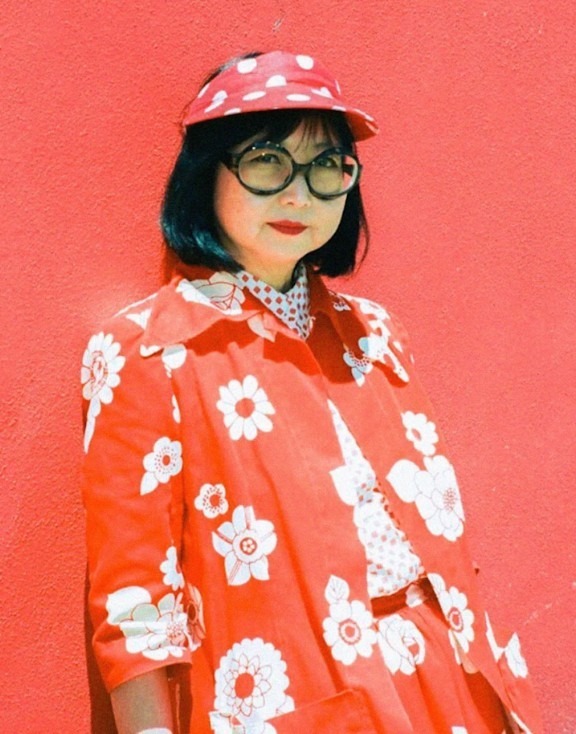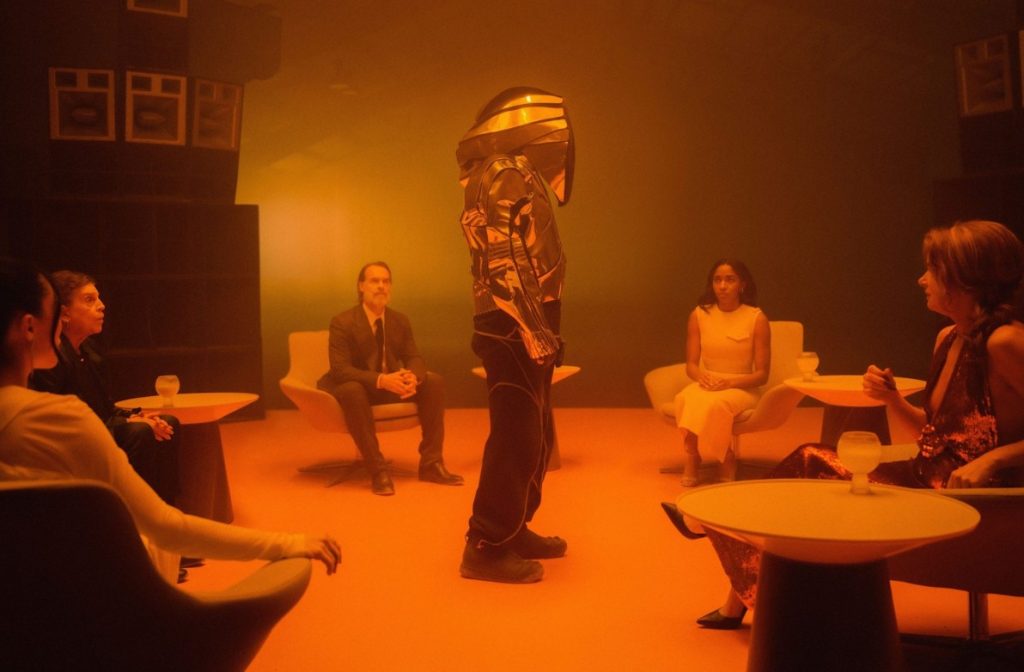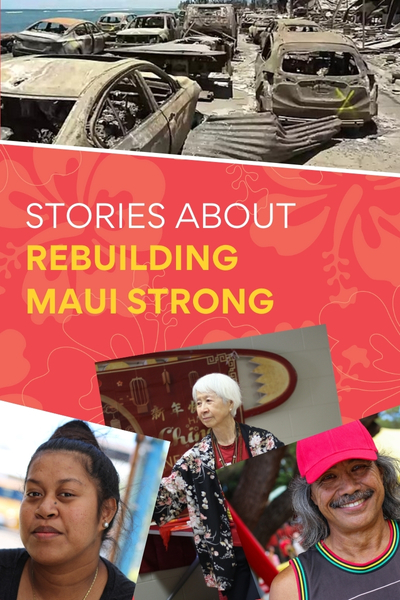By Mimi Chen
The Takeaways
- Shirley Kurata’s Path to Costume Design: Initially aspiring to be a fashion designer, Kurata transitioned into costume design after returning from studying in Paris. She would earn an Oscar nomination as the costume designer for Everything Everywhere All at Once.
- Creative and Sustainable Approach: She emphasizes sustainability by thrifting and repurposing materials, creating unique and eco-conscious designs.
- Vision for Diversity in Filmmaking: She remains dedicated to impactful work, focusing on narratives that push boundaries and celebrate diversity in Hollywood.
The Details:
In the world of costume design, the line between costuming and fashion is often blurred. For one artist, the journey began with a love of fashion, leading to an unexpected, but remarkable, career in the entertainment industry. AsAmNews had the privilege of speaking with the incredibly talented costume designer behind Everything Everywhere All at Once, Japanese American Shirley Kurata, whose work has earned widespread acclaim and an Academy Award nomination.
“I always loved fashion and wanted to be a fashion designer. At 19, I went to Paris to study at a fashion school. I loved it,” Kurata told AsAmNews.
She explained that being on a student visa didn’t lend itself to working in Paris long term. Even though the Los Angeles fashion scene wasn’t as prominent back then, Kurata decided to return to Los Angeles.

“It was the heart of Hollywood,” she said, “and I thought, ‘Maybe I should try my hand at costume design.’”
The transition from aspiring fashion designer to costume designer wasn’t immediate. The designer started by reaching out to industry professionals, offering her services as an intern. After spending a couple years in the shadows, Kurata says she eventually found herself a recognized costumer, finally earning jobs under her own name.
“I learned the ropes, worked on music videos, photo shoots, and slowly started to work my way up in the costume design world,” she recalled. However, her work included working on many short films and TV shows, which apparently had a more family-like aspect to the work.
Though her early career was focused on fashion and music videos, Kurata eventually returned to the world of film. “I missed filmmaking. The sense of family and the lasting impact of a film or TV show drew me back. Plus, the quality of TV shows was improving, and I wanted to be a part of that change,” she state.
Kurata’s big break came unexpectedly. “I had worked on several commercials with Jonathan Wong, the producer of Everything Everywhere All at Once, and he reached out. He told me the Daniels were looking for a costume designer,” she said, with a smile. She noted that when you begin a project, one cannot not fathom how big it would become.
Working on Everything Everywhere All at Once was a career-defining experience for Kurata. When asked about her time working with such famous directors, the designer described the collaboration as incredibly rewarding. “The Daniels are so collaborative. They come from the music video world, so they understand the challenges of working within limited budgets. They’re very open to alternatives and always encouraged creative problem-solving.”
Given the unpredictable nature of film production, this open-minded approach was key to bringing the film’s wild and colorful costumes to life. “There were moments when we didn’t know if a costume would work, but the Daniels were great at navigating those challenges. They trusted the process and gave me the freedom to experiment,” she said.

Kurata notes that the most important aspect in costume design, is that it’s all about supporting the narrative through clothing. “When I approach a project, it’s really about observing life, exploring books, galleries, and staying inspired by the world around me. Pinterest and Instagram help, but the key is staying well-rounded in your artistic influences,” the designer explained.
Interestingly, the designer emphasizes the importance of understanding the character’s journey through the costume. “I try not to impose my personal taste unless it’s fitting for the character. Costume design is all about communication between the director, the actor, and the rest of the creative team. It’s about telling a story through the character’s wardrobe,” she said.
One iconic costume from Everything Everywhere All at Once stands out as a favorite: the “Jumbled Joe Boo” outfit. This ensemble, described as a chaotic mix of fabrics, was pieced together from thrifted clothes, past costumes, and some serendipitous experimentation. “I just freestyled it by pinning fabric to a jumpsuit, letting it evolve into something that felt right for the character,” she shared. The result was a bold and visually stunning costume that perfectly encapsulated the film’s imaginative spirit.
When asked about her favorite ways to source materials, the designer revealed her secret, noting that thrifting has become an essential part of the creative process. “Thrift stores are costume designers’ playlands. Especially when working on indie films, you have to be resourceful, and thrifting allows you to create something that feels lived in,” they said. “It’s also an eco-conscious choice, which is something I’m passionate about.”

For Opus, another project Kurata recently worked on, the costume design involved sourcing and overdying items from thrift stores, resulting in the iconic blue outfits worn by cult members. “It’s amazing what you can create by reusing and reworking old clothes. It’s sustainable, cost-effective, and incredibly creative.”
The conversation shifted to the current state of Hollywood, with the designer acknowledging that the industry has faced challenges, particularly in the wake of the writer’s strike and changing global production practices. “It’s been tough, but I’ve learned to diversify my work. If one project isn’t happening, I’ll take on commercials or music videos. Being adaptable is key in this industry,” explained Kurata.
As a freelancer, Kurata understands the financial instability that comes with the territory. “It’s important to keep a steady stream of work. Diversifying your portfolio helps maintain financial stability, especially in tough times when the industry slows down,” she stated, highlighting the importance of resilience and adaptability in an unpredictable field.

Though she has received recognition for their work, including an Academy Award nomination, the designer remains focused on continuing to create meaningful and impactful work. “The nomination was a huge surprise, and I’m incredibly grateful for it. But for me, it’s about the message of the projects I take on,” they said. “I want to work with creative filmmakers who are telling important stories and have a unique voice to share.”
As for the future, the designer has no plans to start her own fashion line. “I thought about it when I was younger, but now I see the reality of it. It’s a lot of work, and you lose a bit of creative control. I’m happy doing what I do now,” Kurata explained with a laugh.
Before wrapping up the interview, the designer shared her thoughts on the importance of working with filmmakers from diverse backgrounds. “I think it’s important to work with directors of color and filmmakers with different perspectives. That’s how we get fresh, authentic stories that truly reflect the world we live in.”
Reflecting on the future of Hollywood, the designer hopes for greater diversity in both the voices behind the camera and the stories told on screen. “The more diverse the stories, the more interesting and complex the work becomes. It’s about breaking away from the status quo and embracing new voices and ideas.”
(We generated The Takeaways using AI. They were published after our editors checked for accuracy.)
AsAmNews is published by the non-profit, Asian American Media Inc.
We are currently funded by our readers and such charitable foundations as the Robert Wood Johnson Foundation, AARP, Report for America/GroundTruth Project & Koo and Patricia Yuen of the Yuen Foundation.’
Find additional content on Bluesky, Facebook, Instagram , Tiktok, X, and YouTube. Please consider interning, joining our staff, or submitting a story, or making a tax-deductible donation.
You can make your tax-deductible donations here via credit card, debit card, Apple Pay, Google Pay, PayPal and Venmo. Stock donations and donations via DAFs are also welcomed. Contact us at info @ asamnews dot com for more info.


